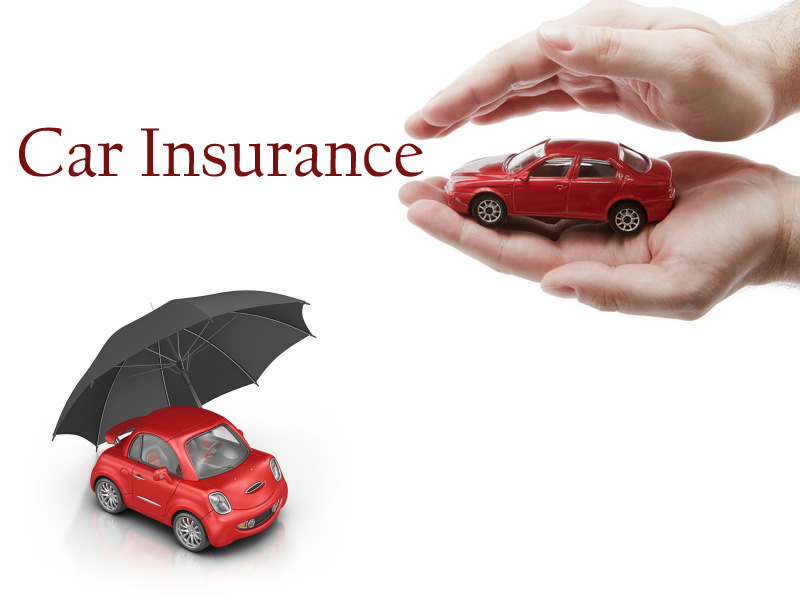Welcome to the world of car insurance, a topic that often feels like a maze of confusing terminology and complex policies. Whether you’re a seasoned driver or a new license-holder, understanding car insurance is essential for every motorist. In this article, we will break down the fundamentals of car insurance, unraveling its mysteries and shedding light on what it truly entails.
Car insurance is a form of protection that provides financial coverage for various risks associated with owning a vehicle. It not only serves to safeguard your own car but also shields you from potential liability in the event of an accident. In simple terms, it is a contract between you and an insurance company, where you agree to pay a premium in exchange for their promise to cover certain costs that may arise from car-related incidents. However, the specifics of what is covered and the extent of that coverage can vary widely depending on the policy you choose.
Now that we have a general understanding of what car insurance is, let’s delve deeper into its intricacies and discover the different types of coverage available. From liability insurance that protects you in case of injury or property damage caused by your vehicle, to collision coverage that helps pay for damages to your own car, we’ll explore the breadth of options available to drivers like yourself. So, buckle up as we embark on this journey to demystify car insurance and equip you with the knowledge you need to navigate the insurance landscape with confidence.
Understanding Car Insurance Coverage
Car insurance is a vital aspect of owning and operating a vehicle. It provides financial protection in the event of accidents, damage, theft, or any unforeseen circumstances that may arise. Understanding the coverage that car insurance offers is essential for every driver to ensure they have the right level of protection.
The primary component of car insurance coverage is liability insurance. This coverage is mandatory in most states and is designed to protect you financially if you cause an accident that results in injury or damage to others. Liability insurance typically has two components: bodily injury liability and property damage liability. Bodily injury liability covers medical expenses, lost wages, and legal fees for individuals injured in an accident you caused. Property damage liability, on the other hand, covers the cost of repairs or replacement for any property damaged in an accident you are involved in.
Another important coverage option is collision insurance. This type of coverage helps pay for repairs or replacement of your own vehicle if it is damaged in a collision with another vehicle or object, regardless of who is at fault. Collision insurance ensures that you don’t have to bear the full financial burden of repairing or replacing your car.
Comprehensive insurance is another coverage option that provides protection against non-collision related incidents. It covers damages to your vehicle caused by events such as theft, vandalism, natural disasters, or falling objects. Comprehensive insurance is crucial if you want to have financial peace of mind knowing that your car is protected from various types of risks.
Click Here
In summary, understanding car insurance coverage is essential for every driver. Liability insurance protects you financially if you are at fault in an accident, while collision and comprehensive insurance provide coverage for damages to your own vehicle. By having the right coverage, you can drive with confidence, knowing that you are protected in case of any unforeseen events.
Factors Affecting Car Insurance Premiums
When it comes to car insurance, there are various factors that can influence the premiums you pay. Insurance providers consider these factors to assess the level of risk associated with insuring a particular driver. Understanding these factors can help you make informed decisions while looking for car insurance. Let’s take a closer look at some key factors affecting car insurance premiums.
Driving Record: Your driving record plays a significant role in determining your car insurance premium. If you have a history of accidents or traffic violations, insurance companies may consider you a higher risk, resulting in higher premiums. On the other hand, a clean driving record with no accidents or tickets can lead to lower insurance rates as it demonstrates responsible driving behavior.
Age and Experience: Insurance companies also take into account your age and driving experience. Younger, less experienced drivers often have higher insurance premiums due to statistical evidence that they are more prone to accidents. However, as you gain more experience behind the wheel and maintain a clean driving record, your premiums may decrease over time.
Vehicle Type: The type of car you drive can affect your insurance premiums. Insurance providers assess factors such as the car’s make, model, age, engine size, and overall safety ratings. Generally, sleek, high-performance vehicles or luxury cars tend to have higher insurance costs due to their perceived increased risk of theft or accidents.

Keep in mind that these are just a few of the factors that can impact your car insurance premiums. Other elements such as your location, annual mileage, credit history, and even gender can also play a role. It’s essential to compare quotes from different insurance providers to find coverage that suits your needs and budget, taking these factors into consideration.
Tips for Choosing the Right Car Insurance Policy
Understand Your Coverage Needs: Before selecting a car insurance policy, it is crucial to assess your specific coverage requirements. Consider factors such as the value of your vehicle, your budget, and the level of protection you desire. For instance, if you own a new car or have a substantial financial investment in your vehicle, comprehensive coverage may be a wise choice. On the other hand, if you have an older car with lower value, a basic liability policy might be more suitable.
Compare Different Insurance Providers: Take the time to research and compare multiple insurance providers to ensure you get the best coverage at a competitive price. Look for companies with a good reputation for customer service and claims handling. Request quotes from various insurers, and carefully analyze the coverage options and associated costs. Reading reviews and seeking recommendations from friends or family can provide valuable insights during the decision-making process.
Review Policy Exclusions and Limitations: Don’t forget to thoroughly review any policy exclusions and limitations before making a final decision. Coverage details can vary significantly from one policy to another, so it’s essential to understand what is included and what is not. Pay attention to factors like deductibles, limits on coverage, and any additional endorsements that can be added to tailor the policy to your specific needs.
Remember, selecting the right car insurance policy requires careful consideration of your individual circumstances. By understanding your coverage needs, comparing options, and being aware of any policy limitations, you can make an informed decision that provides you with the protection you need as a driver.






Recent Comments